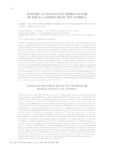Use este identificador para citar ou linkar para este item:
http://www.alice.cnptia.embrapa.br/alice/handle/doc/653747Registro completo de metadados
| Campo DC | Valor | Idioma |
|---|---|---|
| dc.contributor.author | MATSUURA, F. C. A. U. | pt_BR |
| dc.contributor.author | FOLEGATTI, M. I. da S. | pt_BR |
| dc.contributor.author | CARDOSO, R. L. | pt_BR |
| dc.contributor.author | FERREIRA, D. C. | pt_BR |
| dc.date.accessioned | 2017-07-20T23:52:54Z | - |
| dc.date.available | 2017-07-20T23:52:54Z | - |
| dc.date.created | 2006-07-05 | pt_BR |
| dc.date.issued | 2004 | pt_BR |
| dc.identifier.citation | Scientia Agricola, Piracicaba, v. 61, n. 6, p. 604-608, nov./dez., 2004. | pt_BR |
| dc.identifier.issn | 0103-9016 | pt_BR |
| dc.identifier.uri | http://www.alice.cnptia.embrapa.br/alice/handle/doc/653747 | pt_BR |
| dc.description | Nectares are beverages formulated with the juice or pulp of one or more fruits, plus water and sugar in concentrations resulting in a "ready-to-drink" product. Recently, the market for such products has greatly expanded. Fruit mixesent a series of advantages, such as the combination of different aromas and flavores and the sum of their nutritional components. The objective of this work was to develop a nectar based on papaya pulp and passion fruit juice, enriched with the vitamin C present in acerola pulp, optimizing the formulation using sensory consumer tests and a response surface statistical methodology. Eleven formulations were prepared using different concentrations of papaya pulp and passion fruit juice and sucrose, and maintaining the concentration of acerola pulp constant. The sensory tests were carried out with 22 nontrained panelists using a structured 9-point hedonic scale to evaluate overall acceptance. The acceptance means were submitted to regression analysis, by first calculating a polynomial quadratic equation. A predictive model was adjusted considering only those parameters where P[<,=]0.05, and a response surface was generated. The overall acceptance of nectars of different formulations varied from 5 ("neither liked nor disliked") to more than 7 ("liked moderately"), showig that some products can be considered adequate to consumers, like the nectar produced with 37.5% papaya pulp, 7.5% passion fruit juice, and 5.0% acerola pulp, added of 15% sucrose. A quadratic predictive overall acceptance model, with a regression coefficient of 0.97 was obtained. The sensory acceptance of nectares was positively affected by increases in the concentrations of papaya pulp and of sucrose. Thus, some products presented good sensory acceptance suggesting commercial potencial. | pt_BR |
| dc.language.iso | eng | eng |
| dc.rights | openAccess | eng |
| dc.subject | Beverage | pt_BR |
| dc.subject | ready-to-drink | pt_BR |
| dc.subject | tropical fruit | pt_BR |
| dc.subject | blend | pt_BR |
| dc.title | Sensory acceptance of mixed nectar of papaya, passion fruit and acerola. | pt_BR |
| dc.type | Artigo de periódico | pt_BR |
| dc.date.updated | 2017-07-20T23:52:54Z | pt_BR |
| riaa.ainfo.id | 653747 | pt_BR |
| riaa.ainfo.lastupdate | 2017-07-20 | pt_BR |
| dc.contributor.institution | FERNANDO CÉSAR AKIRA URBANO MATSUURA, EMBRAPA-CNPMF; EMBRAPA-CNPMA; MARÍLIA IEDA DA SILVEIRA FOLEGATTI; RICARDO LUÍS CARDOSO; DANIEL COSTA FERREIRA. | pt_BR |
| Aparece nas coleções: | Artigo em periódico indexado (CNPMF)  | |
Arquivos associados a este item:
| Arquivo | Descrição | Tamanho | Formato | |
|---|---|---|---|---|
| 2004SP10MatsuuraSensory6913.pdf | 107.45 kB | Adobe PDF |  Visualizar/Abrir |









